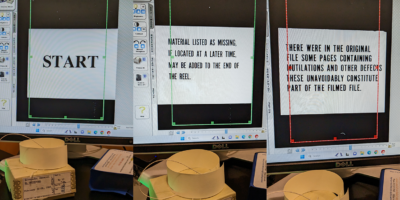By Lais Duarte
Mindfulness has been defined as “a means of maintaining a moment-by-moment awareness of our thoughts, feelings, bodily sensations, and surrounding environment, through a gentle, nurturing lens” (Greater Good Science Center – UC Berkeley). The concept can be traced back to the work of Jon Kabat-Zin who drew inspiration from Buddhist traditions of meditation to develop a stress reduction program at the University of Massachusetts in 1979. The program invited patients who had been failed by commonly used psychotherapeutic models to engage in guided meditation exercises that could help them cultivate awareness in the present moment non-judgmentally. Some of the meditation practices that arise from Zin’s program include steps to bring attention to the breath, notice wandering thoughts, and cultivate a gentle inner-voice in order to respond with kindness and compassion to a wide range of feelings and streams of thought. Mindfulness offers a way of engaging an emotional literacy that can make people, and environments made by people, more accepting and supportive of the diverse range of states of being that constitute human experiences.
Like many of Zin’s patients, I found in the practice of mindfulness a way out of a disabling lack of self-acceptance that had shaped most of my trajectory in graduate school. For most of my academic career, I have struggled with mental health and feelings of inadequacy, often alone, because I didn’t trust that the learning community that I was part of could or would support me. While in graduate school I found few spaces to talk about my failures and challenges, to be vulnerable and to ask for help from my peers and professors when I most needed it. It is because of these experiences that I decided to devote my pedagogical practice to the intentional disruption of the reproduction of classroom environments that make higher-learning institutions unwelcoming spaces for people who, like me, struggle with mental health and the challenges of navigating institutions that weren’t designed to accommodate our needs, learning styles and talents. I do this work by incorporating into my courses assignments, lesson-planning and lectures, practices that aim to engage students with the emotional dimension of learning and that can help them build a supportive community. I’ve found in the pedagogical practice of mindfulness and contemplative pedagogy helpful strategies to do this work, which benefits all students, but especially those who are struggling.
Throughout the semester I invite students to engage in guided breathing exercises that help build focus, I share affirmations and stories that intend to de-stigmatize failure, I design writing assignments that invite reflection on the emotional dimension of reading and writing, and build in-class time for group work aimed at collective problem-solving. Below are more details on some of these practices that can be used in the classroom.
Guided Breathing Exercises
At the beginning of each class I invite students to join me in a circle in the middle of the classroom. I then explain the pedagogical purpose of bringing awareness to the breath and of breathing as a community before I engage them in guided breathing exercises. I draw inspiration from thoughtful and talented Yoga teachers I have had and while speaking slowly, I walk students through 3 rounds of slow and conscious inhaling and exhaling. I also ask students to share something for which they feel grateful and set an intention for the day. Sometimes we choose a fellow student to thank for an act of generosity, sometimes we remind each other to notice the beauty around us, etc. I find that students’ moods are lifted in the room after the exercise. Students also tend to demonstrate a general sense of tranquility and camaraderie as they return back to their seats. They are also more focused on the material we engage throughout the class. The exercise takes about 5-7 minutes in total.
Affirmations
Throughout my lectures and while leading group discussions, I often share affirmations that intend to de-stigmatize failure and celebrate vulnerability. Some of the affirmations include “Asking for help is brave,” “You don’t need to do this alone, trust your peers, trust your instructor,” “Failing is a necessary part of your learning process,” “Nobody is at their best at all times and that’s okay, I’m happy that you are here,” and “We are your audience and we are here rooting for you.” It’s important to de-stigmatize failure and remind them that their peers and instructor can be resources as it can open space for students to share what they don’t know without feeling judged or ashamed. I find that cultivating this appreciation encourages students to ask questions, to help each other by offering an example that can complete a sentence or thought, and to show up for class even when they feel confused by the assigned readings. I also share my own moments of failure and the lessons I could learn from each of them. I’ve talked for instance about failing my oral examinations and being told by a professor that my writing was “too rough to engage” in my first years of graduate school. Both of these painful experiences taught me to experiment with study strategies better suited for my learning style and about the importance of scaffolding long assignments by writing detailed outlines and prompts.
Reflection Exercises
Throughout the semester students are also invited to engage in low-stakes writing assignments where they respond to a text they have read by choosing relevant quotes and reflecting on their choice of those quotes, and by assessing the emotional impact of their reading and writing experience. I ask students to simply name the feelings that arise as they read and write which helps them see that they can always have a contribution even and especially when that contribution comes from recognizing discomfort or confusion that emerges with the experience of engaging a new or far too familiar perspective. I remind students of the mindfulness principle that “there are no wrong feelings” and that the better we become at naming our feelings without placing them into a hierarchy, the more likely we are to make our feelings into allies that can help us learn. When workshopping scaffolded assignments, for instance, I talk about how scared of writing I still feel when confronted with a blank page and how I learned that by taking 5 minutes to write down the feelings that came up as I stared at the page, I managed to make friends with my fear and allowed it to help me put words onto the page, which later led me to an idea for a topic and eventually helped me to move away from being scared.
Group Work
Mindfulness encourages community building by inviting awareness to the present moment and allowing us to be more in tune with our surroundings, our needs, and the needs of those who are part of our communities. I introduce students to this notion when explaining the importance of thinking together in class and of extending to our peers the kindness and compassion that we are taught to cultivate towards ourselves during our breathing exercises. Every week students are invited to attend to questions that aim to check for understanding of key concepts. I divide students into groups of 4, assign each group a different question and ask students to produce a paragraph collectively attending to the question. Subsequently each group choses a spokesperson who will share the response with the rest of the class. Students are then graded as a group based on the collective writing they have produced. My goal is to help build a classroom environment where students learn to trust their learning community, to ask for help when they need it and to be supportive of each other’s learning processes.
Conclusion
The support that I couldn’t find in most classroom environments that I encountered throughout my graduate school career taught me that environments that praise the performance of intellectuality while overlooking the importance of collective thinking and feeling can be disabling for many students. The many inspiring teachers and community-oriented spaces of which I became a part as I began to ask for help and heal outside of school inspired me to strive to create a classroom environment that wouldn’t disable my students. Through the strategies described above I have found ways to create a loving and supportive community-oriented classroom environment that can help enable my students to trust each other and honor their own learning processes. The recipe for your own classroom may look different, but it’s always worth trying to build one that can honor students’ and instructors’ needs and foster acceptance, respect for process, and compassion.










Leave a Reply